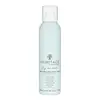What's inside
What's inside
 Key Ingredients
Key Ingredients

No key ingredients
 Benefits
Benefits

 Concerns
Concerns

 Ingredients Side-by-side
Ingredients Side-by-side

Hydrofluorocarbon 152a
Alcohol Denat.
AntimicrobialNeopentyl Glycol Diheptanoate
EmollientWater
Skin ConditioningOctylacrylamide/Acrylates/Butylaminoethyl Methacrylate Copolymer
Isododecane
EmollientCetrimonium Chloride
AntimicrobialAminomethyl Propanol
BufferingArgania Spinosa Kernel Oil
EmollientOryza Sativa Starch
AbsorbentGlycerin
HumectantSpathodea Campanulata Flower Extract
Skin ConditioningPotassium Sorbate
PreservativeSorbic Acid
PreservativeParfum
MaskingHydrofluorocarbon 152a, Alcohol Denat., Neopentyl Glycol Diheptanoate, Water, Octylacrylamide/Acrylates/Butylaminoethyl Methacrylate Copolymer, Isododecane, Cetrimonium Chloride, Aminomethyl Propanol, Argania Spinosa Kernel Oil, Oryza Sativa Starch, Glycerin, Spathodea Campanulata Flower Extract, Potassium Sorbate, Sorbic Acid, Parfum
Butane
Disiloxane
Skin ConditioningWater
Skin ConditioningPropane
Pvp
Emulsion StabilisingHippophae Rhamnoides Fruit/Seed Oil
AntimicrobialVp/Dmapa Acrylates Copolymer
Hydrolyzed Vegetable Protein
Skin ConditioningHydrolyzed Wheat Protein
Skin ConditioningCetyl PEG/PPG-10/1 Dimethicone
EmulsifyingPhenyl Trimethicone
Skin ConditioningPropylene Glycol
HumectantQuaternium-26
Polyquaternium-59
UV AbsorberButylene Glycol
HumectantEthylhexylglycerin
Skin ConditioningHexylene Glycol
EmulsifyingHydroxyethyl Behenamidopropyl Dimonium Chloride
Microcrystalline Wax
Emulsion StabilisingParaffin
PerfumingPolyethylene
AbrasiveBenzalkonium Chloride
AntimicrobialPhenoxyethanol
PreservativePotassium Sorbate
PreservativeSodium Benzoate
MaskingParfum
MaskingBenzyl Benzoate
AntimicrobialHydroxycitronellal
PerfumingLimonene
PerfumingCitronellol
PerfumingButane, Disiloxane, Water, Propane, Pvp, Hippophae Rhamnoides Fruit/Seed Oil, Vp/Dmapa Acrylates Copolymer, Hydrolyzed Vegetable Protein, Hydrolyzed Wheat Protein, Cetyl PEG/PPG-10/1 Dimethicone, Phenyl Trimethicone, Propylene Glycol, Quaternium-26, Polyquaternium-59, Butylene Glycol, Ethylhexylglycerin, Hexylene Glycol, Hydroxyethyl Behenamidopropyl Dimonium Chloride, Microcrystalline Wax, Paraffin, Polyethylene, Benzalkonium Chloride, Phenoxyethanol, Potassium Sorbate, Sodium Benzoate, Parfum, Benzyl Benzoate, Hydroxycitronellal, Limonene, Citronellol
 Reviews
Reviews

Alternatives
Ingredients Explained
These ingredients are found in both products.
Ingredients higher up in an ingredient list are typically present in a larger amount.
Parfum is a catch-all term for an ingredient or more that is used to give a scent to products.
Also called "fragrance", this ingredient can be a blend of hundreds of chemicals or plant oils. This means every product with "fragrance" or "parfum" in the ingredients list is a different mixture.
For instance, Habanolide is a proprietary trade name for a specific aroma chemical. When used as a fragrance ingredient in cosmetics, most aroma chemicals fall under the broad labeling category of “FRAGRANCE” or “PARFUM” according to EU and US regulations.
The term 'parfum' or 'fragrance' is not regulated in many countries. In many cases, it is up to the brand to define this term.
For instance, many brands choose to label themselves as "fragrance-free" because they are not using synthetic fragrances. However, their products may still contain ingredients such as essential oils that are considered a fragrance by INCI standards.
One example is Calendula flower extract. Calendula is an essential oil that still imparts a scent or 'fragrance'.
Depending on the blend, the ingredients in the mixture can cause allergies and sensitivities on the skin. Some ingredients that are known EU allergens include linalool and citronellol.
Parfum can also be used to mask or cover an unpleasant scent.
The bottom line is: not all fragrances/parfum/ingredients are created equally. If you are worried about fragrances, we recommend taking a closer look at an ingredient. And of course, we always recommend speaking with a professional.
Learn more about ParfumPotassium Sorbate is a preservative used to prevent yeast and mold in products. It is commonly found in both cosmetic and food products.
This ingredient comes from potassium salt derived from sorbic acid. Sorbic acid is a natural antibiotic and effective against fungus.
Both potassium sorbate and sorbic acid can be found in baked goods, cheeses, dried meats, dried fruit, ice cream, pickles, wine, yogurt, and more.
You'll often find this ingredient used with other preservatives.
Learn more about Potassium SorbateWater. It's the most common cosmetic ingredient of all. You'll usually see it at the top of ingredient lists, meaning that it makes up the largest part of the product.
So why is it so popular? Water most often acts as a solvent - this means that it helps dissolve other ingredients into the formulation.
You'll also recognize water as that liquid we all need to stay alive. If you see this, drink a glass of water. Stay hydrated!
Learn more about Water